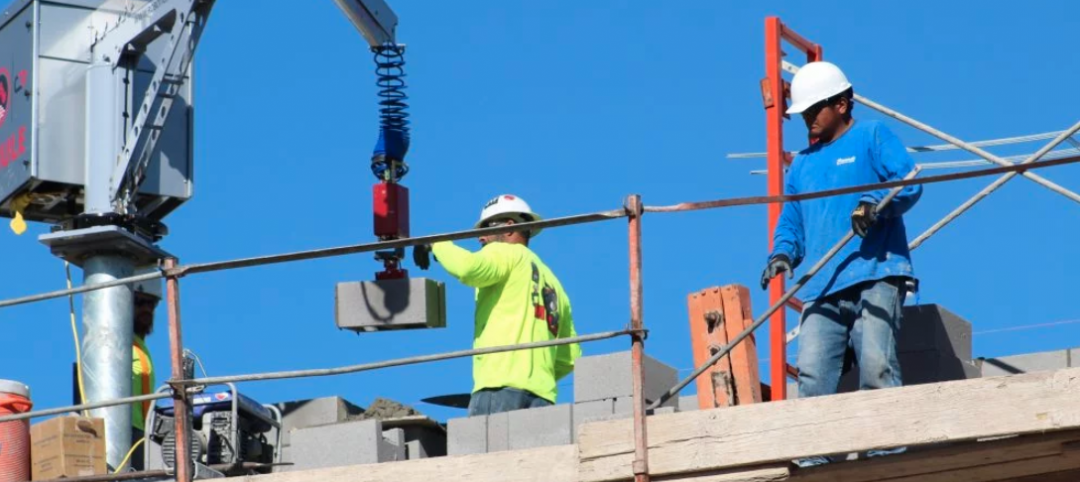WASHINGTON, DC - Last week, Senators Jeff Merkley Mark Pryor, Debbie Stabenow, Sherrod Brown, Bernie Sanders, and Ben Cardin introduced the "Building STAR Energy Efficiency Rebate Act of 2010" to create jobs by promoting the installation of energy-efficient renovations in commercial and multi-family residential buildings.
By utilizing rebates and low-interest loans, the "Building Star" program leverages between two and three dollars in private investment for every federal dollar spent. Rebates included in the bill would amount to $6 billion, in order to stimulate $18 to $24 billion in total investment, resulting in more than 150,000 new jobs. These jobs will pay well, allow companies to rehire laid off workers and infuse sorely needed capital into small businesses and hard-hit communities across the country. The savings accrued by building owners and the profits earned by laborers and manufacturers will power even more economic growth.
"Clean energy is not only the next great growth industry, but it's an engine for job creation today," Senator Merkley said. "Energy-efficiency programs like ‘Building Star' will put Americans to work in construction and manufacturing and save small businesses money as we strive for American energy independence."
"Building STAR" is supported by PIMA and other member organizations of Rebuilding America, a ground-breaking coalition of unions, contractor associations, manufacturers, financial services companies and energy efficiency advocates.
"Building Star" is similar to "Home Star," a parallel program that offers energy- efficiency assistance to homeowners. President Barack Obama announced his support March 2nd for the residential property "Home Star" program, including the financing options recommended by Senator Merkley.
"Senator Merkley's Building Star proposal recognizes the role commercial building retrofits can play in providing immediate job creation while ensuring the nation's existing buildings can fulfill their potential as energy efficient 21st century structures," said Polyisocyanurate Insulation Manufacturers Association President and CEO Jared Blum. "Commercial buildings retrofits are an essential part of any Congressional effort to chart an effective course for the nation's construction industry recovery program."
"Today, one in five construction workers - over 1.7 million people - are out of work. America's buildings are wasting both energy and money. As the Senate considers a jobs agenda for 2010, it should incorporate policies that will drive wide-scale building retrofits, such as the Building STAR proposal, that create good local construction jobs and reduce energy costs," said Reid Detchon, Executive Director of the Energy Future Coalition. "Building STAR is a package of rebates for energy efficient retrofits of commercial and multi-family residential buildings designed to create jobs and help small businesses nationwide."
Building STAR would:
• Create 25,000 jobs in 2010 for every $1 billion of federal investment for the hard-hit construction and building services, manufacturing, and distribution sectors. For a $6 billion federal investment, for example, Building STAR would create at least 150,000 jobs.
• Maximize federal investment, by leveraging $2-3 in private investment for every federal dollar spent. Building STAR would thus spur a total market activity of $18 - $24 billion, with a $6 billion federal investment, making this a great model for a public-private partnership and maximizing resource efficacy.
• Provide direct benefits to the thousands of small businesses, including the 91 percent of commercial contractors that have fewer than 20 employees.
• Use a simple application process so that building owners can participate easily.
• Work quickly, because the rebate and incentive levels are established in legislation, rather than by agencies, making it possible to implement Building STAR immediately. In addition, this program is based on existing, already- proven utility rebate programs and tax incentives.
• Deliver real energy savings and greenhouse gas emissions reductions, because of the typically large size and scope of commercial and multi-family building retrofits. For example, such retrofits could save industry $3.3 billion a year, based on data compiled by the American Council for an Energy Efficient Economy.
About PIMA
For over 20 years, the Polyisocyanurate Insulation Manufacturers Association (PIMA) has served as the unified voice of the rigid polyiso industry proactively advocating for safe, cost-effective, sustainable and energy efficient construction. PIMA's members, who first came together in 1987, include a synergistic partnership of polyiso manufacturers and industry suppliers. Polyiso is one of the Nation's most widely used and cost-effective insulation products available. To learn more visit www.polyiso.org.
Related Stories
Modular Building | Feb 16, 2020
On the West Coast, prefab gains ground for speedier construction
Gensler has been working with component supplier Clark Pacific on several projects.
AEC Tech | Feb 13, 2020
Exclusive research: Download the final report for BD+C's Giants 300 Technology and Innovation Study
This survey of 130 of the nation's largest architecture, engineering, and construction firms tracks the state of AEC technology adoption and innovation initiatives at the AEC Giants.
Sponsored | HVAC | Feb 3, 2020
Reliable Building Systems Increase Net Operating Income by Retaining Tenants
Tenants increasingly expect a well-crafted property that feels unique, authentic, and comfortable—with technologically advanced systems and spaces that optimize performance and encourage collaboration and engagement. The following guidance will help owners and property managers keep tenants happy.
Building Technology | Jan 31, 2020
The bidding war for Thyssenkrupp’s elevator technology business just got hotter
Engineering firm Kone Oyj raises the ante and joins three other suitor groups that have made multibillion dollar offers.
AEC Tech | Jan 16, 2020
EC firms with a clear ‘digital roadmap’ should excel in 2020
Deloitte, in new report, lays out a risk mitigation strategy that relies on tech.
Building Technology | Jan 7, 2020
Tariff whiplash for bifacial solar modules
Bifacial solar systems offer many advantages over traditional systems.
Sponsored | HVAC | Jan 6, 2020
Four Ways Building Systems Create Long-term Profitability
When accounting for the total cost of ownership and the potential return on investment, owners and developers should consider total energy usage, the lifespan of building systems equipment, the recruitment and retention of occupants, and lease rates.
Sponsored | HVAC | Jan 6, 2020
Maximize Energy Efficiency in Class A Office Buildings With Modern Building Systems
Energy-efficient building design starts with the building envelope, but the building systems have a tremendous impact on energy use as well.
| Dec 18, 2019
Reconsidering construction robotics
After decades when experts predicted that robots would become more prevalent on construction sites, it would appear that the industry has finally reached that point where necessity, aspiration, and investment are colliding.
75 Top Building Products | Dec 16, 2019
Top Building Systems Products for 2019
FabricAir’s ceiling-hung fabric duct and Ellumi Lighting’s bacteria-killing lights are among the 13 new building systems products to make Building Design+Construction's 2019 101 Top Products report.













